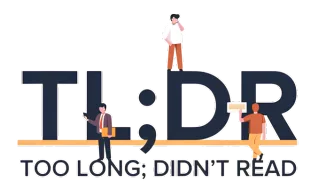The Securities and Exchange Commission, often seen as a stern regulator, now speaks a different language. Its chair, Paul Atkins, talks of welcoming innovation. He wants to formalize an “innovation exemption” for companies building with digital assets. This move could reshape how crypto businesses operate in the United States.
- SEC Chair Paul Atkins is proposing an “innovation exemption” to encourage digital asset companies to build in the U.S., marking a shift from past restrictive approaches.
- This initiative aims to reverse the trend of innovation moving abroad due to perceived regulatory repression, with rulemaking potentially starting by late 2025 or early 2026, though a government shutdown has caused delays.
- Beyond the exemption, discussions around market structure for digital assets are ongoing, with legislation like the GENIUS Act focusing on stablecoins and signaling a move towards more integrated use of digital assets in financial operations.
Atkins has made it clear: crypto is “job one” for the agency. He believes the SEC should encourage developers and entrepreneurs to build here. This is a notable shift from past approaches, which many in the industry felt stifled growth.
He spoke at a recent event in New York, hosted by the law firm Katten Muchin Rosenman LLP. His message was consistent. The SEC aims to become a pro-innovation body, a change many have waited for.
For at least four years, Atkins noted, the industry faced what he called “repression.” This pushed innovation abroad, away from American shores. The exemption seeks to reverse that trend, inviting talent back home.
The agency hopes to start this rulemaking process by the end of 2025 or early 2026. This timeline, however, depends on one significant factor: the ongoing U.S. government shutdown. It has, Atkins admitted, “hamstrung” the SEC’s ability to make progress.
Rulemaking, including rules for crypto, is currently paused. While essential tasks continue, the work of crafting new regulations must wait. It’s a pause that leaves many in the digital asset space holding their breath.
This formal rulemaking would move the SEC beyond its previous “regulation-by-enforcement” strategy. It would also replace the informal guidance and staff notes used more recently. A clear rulebook, rather than reactive measures, is the goal.
Atkins himself has pushed hard for this exemption. He wants it “squared away” soon. His aim is to make innovators feel they can truly build and thrive within the United States, without needing to seek opportunities elsewhere.
The Path for Market Structure
Beyond the innovation exemption, the broader market structure for digital assets remains a topic of discussion. Atkins praised Congress for its work on crypto-specific laws. He pointed to the GENIUS Act, which focuses on stablecoins.
The SEC, he noted, did not play a major role in drafting that particular bill. Still, he remains optimistic about its impact on market structure. “We’ll see where that goes,” he said, hinting at future possibilities.
Not everyone shares Atkins’ sunny outlook. Speakers at an earlier panel expressed less confidence. They doubted a comprehensive market structure bill would pass before the end of 2025.
Summer Mersinger, CEO of the Blockchain Association, offered a cautious prediction. She gave the bill a 51% or 52% chance of passing this year. That’s hardly a ringing endorsement, is it?
Greg Xethalis, a partner at Multicoin Capital, acknowledged the lawmakers’ efforts. Chris Perkins from CoinFund, however, simply did not believe the bill would happen. This shows a clear split in industry expectations.
Stablecoins and Real-World Impact
The GENIUS Act, the first major crypto-focused bill to become law in the U.S., has already started to show results. Regulators at the Treasury Department have published proposed rules for the stablecoin sector earlier this year.
This is where things get interesting for everyday use. Xethalis suggested that much of what comes next will be about the “plumbing.” Think of it like building the pipes and wires behind the walls of a new house.
He foresees a “Cambrian explosion” of people using stablecoins daily. He pointed to Visa integrating USDC into its payment growth tooling as an example. People are already “indirectly us[ing] crypto,” he noted.
Imagine your credit card company quietly using a stablecoin for faster, cheaper transfers. You might not even notice the digital rails underneath. That’s the kind of subtle, powerful change Xethalis predicts.
Mersinger echoed this sentiment. She sees stablecoin use continuing to grow. She highlighted their potential as collateral in fund transfers and other types of financial contracts. This moves stablecoins beyond just trading into core financial operations.
The SEC’s push for an innovation exemption, coupled with legislative efforts like the GENIUS Act, signals a changing tide. It suggests a future where digital assets are not just tolerated, but actively encouraged, right here at home.

